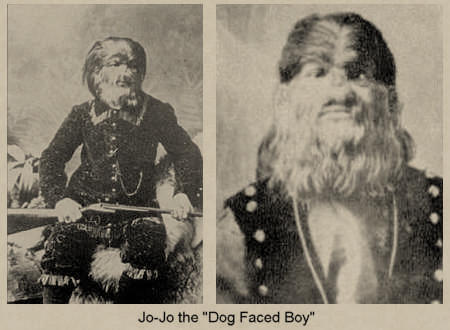Wookie syndrome: There is a real disease that causes humans to look like Chewbacca
12/15/2015 / By Chris Draper

Chewbacca from the Star Wars franchise is widely known, even among non-Star Wars fans, for his wolfish, bear-like appearance and distinctive barbaric yell. But whatever fictional beasts exist in the world of science fiction have elements rooted in reality. There are real Chewbacca-like characters that walk the earth with a condition known as werewolf syndrome.
Hypertrichosis, otherwise known as werewolf syndrome, is a very rare condition with less than 100 cases worldwide. It is triggered by a genetic mutation which causes people to grow thick hair on their faces and bodies. Men with the condition have hair masking their faces and eyelids, whereas women with the condition grow thick patches of hair on their body. The thickness, color and speed of hair growth tends to vary from one body part to another.(1)
The Wolf Boy, Living Werewolf or Dog-Faced Boy have been poster children for the sideshow world for centuries. Jo-Jo, the Dog-Faced Boy, is arguably the most famous among the group by name; however, cases of hypertrichosis were documented well before Jo-Jo came onto the scene.(1)
50 shades of werewolf syndrome
Congenital hypertrichosis terminalis is the most common version of werewolf syndrome conflated with the condition. This version involves hair growth throughout the entire body. Curiously, this condition almost always occurs along side another condition known as gingival hyperplasia, which involves an increase in the size of gum and a decrease in the number of teeth. In addition, contrary to Chewbacca’s hallmark howl, those afflicted by the condition tend to have soft, smooth and gentle voices.(1)
The power of the elements: Discover Colloidal Silver Mouthwash with quality, natural ingredients like Sangre de Drago sap, black walnut hulls, menthol crystals and more. Zero artificial sweeteners, colors or alcohol. Learn more at the Health Ranger Store and help support this news site.
Nevoid hypertrichosis is an atypical version of werewolf syndrome where an isolated region of the body grows an excessive amount of hair. It does not usually occur with other diseases unless it occurs as a faun tail on the lower back, which could indicate spina bifida.(1)
Nevoid hypertrichosis can occur at birth or develop later in life. Symptoms of nevoid hypertrichosis include hairy tufted ears, tails, a heavy unibrow or extreme beard growth in both males and females. Congenital hypertrichosis is an incredibly rare form of hypertrichosis terminalis with only around 50 cases reported worldwide since the Middle Ages.(1)
The disease is characterized by excessive hair growth at the moment of birth. Most of the body tends to be covered with lanugo hair, which is the first hair to be produced by the fetal hair follicles. It usually sheds after eight months of gestation and is substituted by fine vellus hair.(1)
Not your typical haircut
Treating werewolf-syndrome isn’t as easy as taking a trip to the barber shop. Every imaginable treatment, from homeopathy to laser surgery, will not prevent the hair from growing back.
Fundamentally, werewolf syndrome is a genetic disorder, but for centuries, physicians had no idea exactly what caused the disease. In 2011, however, scientists discovered a genetic mutation which caused people to sprout excessive hair on their faces and bodies.(2)
A man in China with congenital hypertrichosis aided researchers in figuring out what caused the condition. Xue Zhang, a professor of medical genetics at the Peking Union Medical College, tested the man and his family, and discovered an extra gene chunk in the same location of their X chromosome. The extra DNA may activate a hair-growth gene nearby, which triggers a snowball of fur growth.(2)
“If in fact the inserted sequences turn on a gene that can trigger hair growth, it may hold promise for treating baldness or hirsutism [excessive hair growth] in the future, especially if we could engineer ways to achieve this with drugs or other means,” wrote study researchers of Pragna Patel of the University of Southern California.(2)
Hopefully, researcher will be able to devise a treatment for the disorder, which will make werewolf syndrome as fictitious as our favorite wookie character.
Sources include:
(2) LiveScience.com
Tagged Under: Chewbacca, genetic disease, mutation, Star Wars, werewolf syndrome, wookies




















